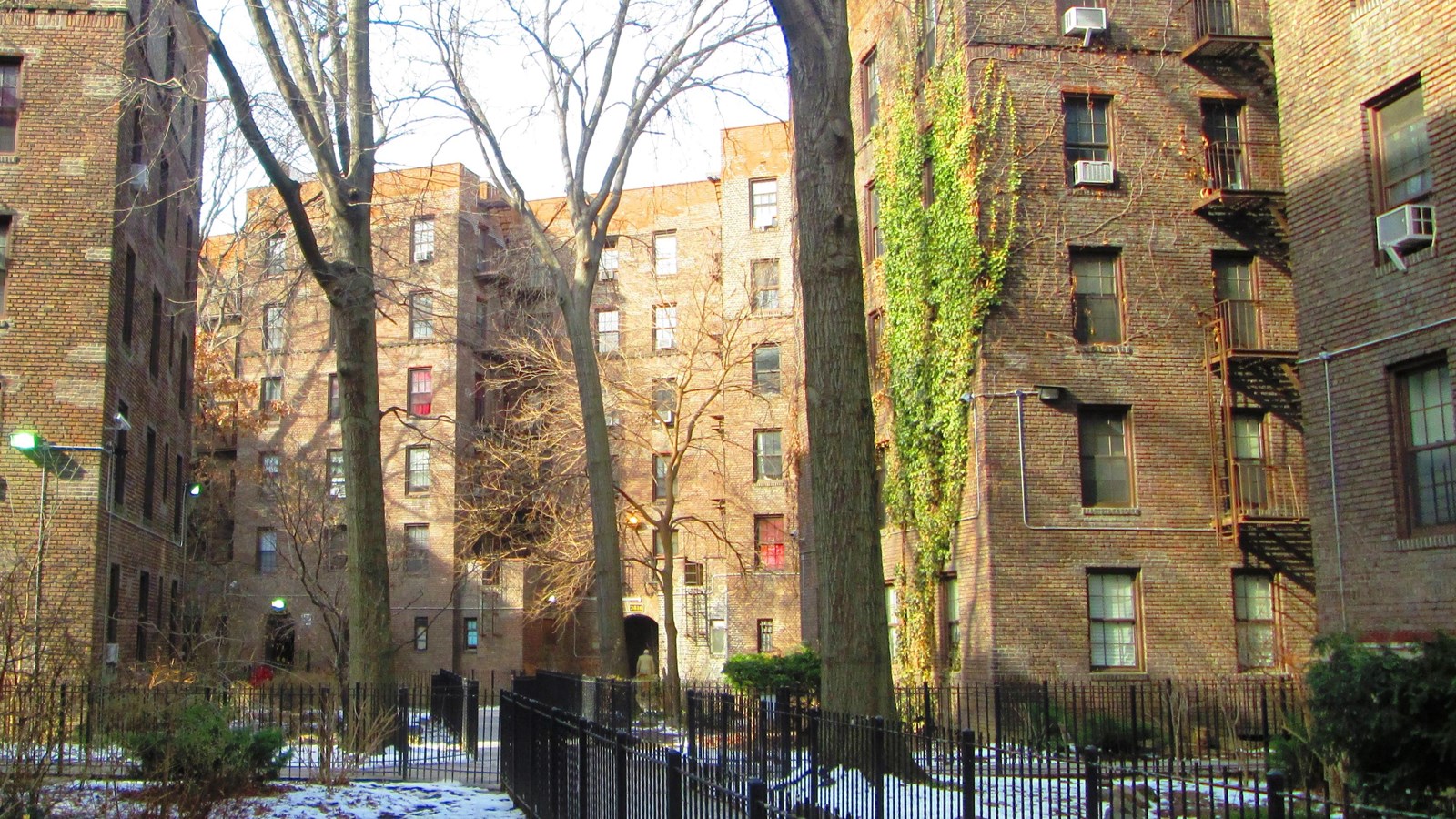Last updated: May 9, 2020
Place
New York: Dunbar Apartments

Photo by Beyond My Ken, CC BY-SA 4.0, https://commons.wikimedia.org/w/index.php?curid=32078033
Labor reformer and unionist Asa Philip Randolph, one of many influential African Americans who lived at the Dunbar Apartments, battled racism in American industry. He also is well-known for spearheading the 1963 March on Washington which ended at the Lincoln Memorial. The apartment complex, constructed in 1926, consists of ten u-shaped buildings centered around an interior garden courtyard which allowed air and light to reach each apartment. The Dunbar Apartments, the first large garden complex in Manhattan, contained a nursery school, playground, retail stores, and a branch of the Dunbar National Bank, Harlem's first bank to be managed and staffed by African Americans.
As a labor leader championing equality for Pullman's railroad porters, Randolph spoke before 500 Pullman porters who had met secretly in 1925 in order to avoid their employer's notorious unionization busting. Later that year, as a result of the meeting, Randolph helped organize the Brotherhood of Sleeping Car Porters. For 12 years, the union persevered despite merciless opposition from the Pullman Company and, in 1937, Randolph and the porters prevailed. Forced to the bargaining table, the Pullman Company signed the first-ever contract with a black union. As a result, Randolph stepped into the national arena. To end the exclusion of blacks from the defense industry, he threatened a march on Washington in 1941. President Franklin D. Roosevelt subsequently issued an executive order outlawing discrimination in the hiring of defense industry and government employees. The order also established the Committee on Fair Employment Practice. President Harry Truman signed an executive order seven years later, at the insistence of Randolph, which ended racial segregation in the military. By the 1950s, civil rights leaders recognized Randolph, the first African American vice-president of the American Federation of Labor, as an elder statesman, and in that role he organized the Washington, D.C., youth marches, Prayer Pilgrimage and 1963 march.
The Dunbar Apartments, where Randolph once lived, were financed by John D. Rockefeller, Jr., and were "the first large cooperative built for Blacks," according to the New York City Landmarks Commission, and "it was a prototype structure for both the public housing projects of the Depression years and for later middle-income housing." Other prominent African Americans who lived at the Dunbar Apartments included W.E.B. Du Bois, Paul Robeson, and Arctic explorer Matthew A. Henson.
Visit the National Park Service We Shall Overcome travel itinerary to learn more about the civil rights movement themes and histories. Also, be sure to check out Civil Rights subject site.
